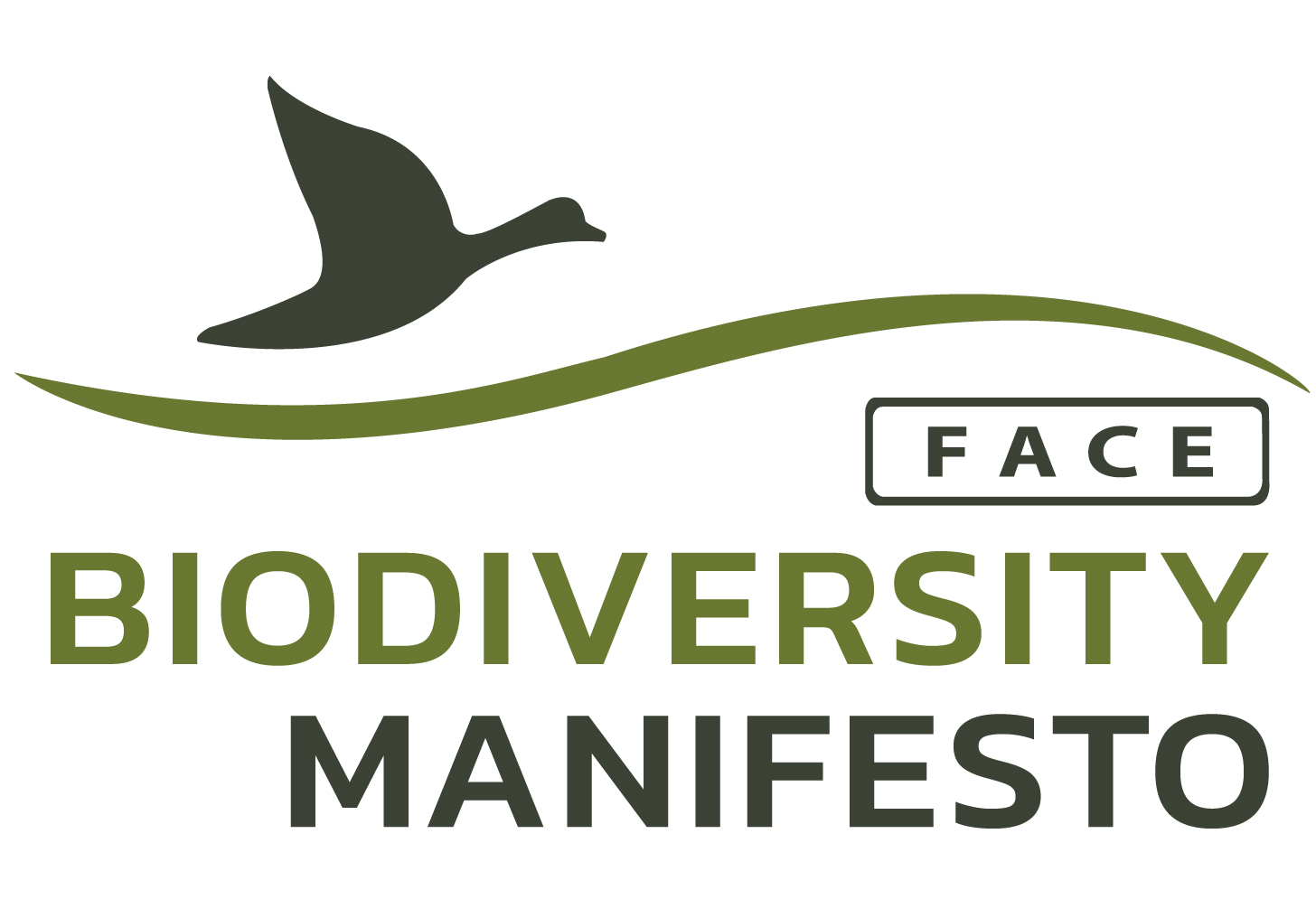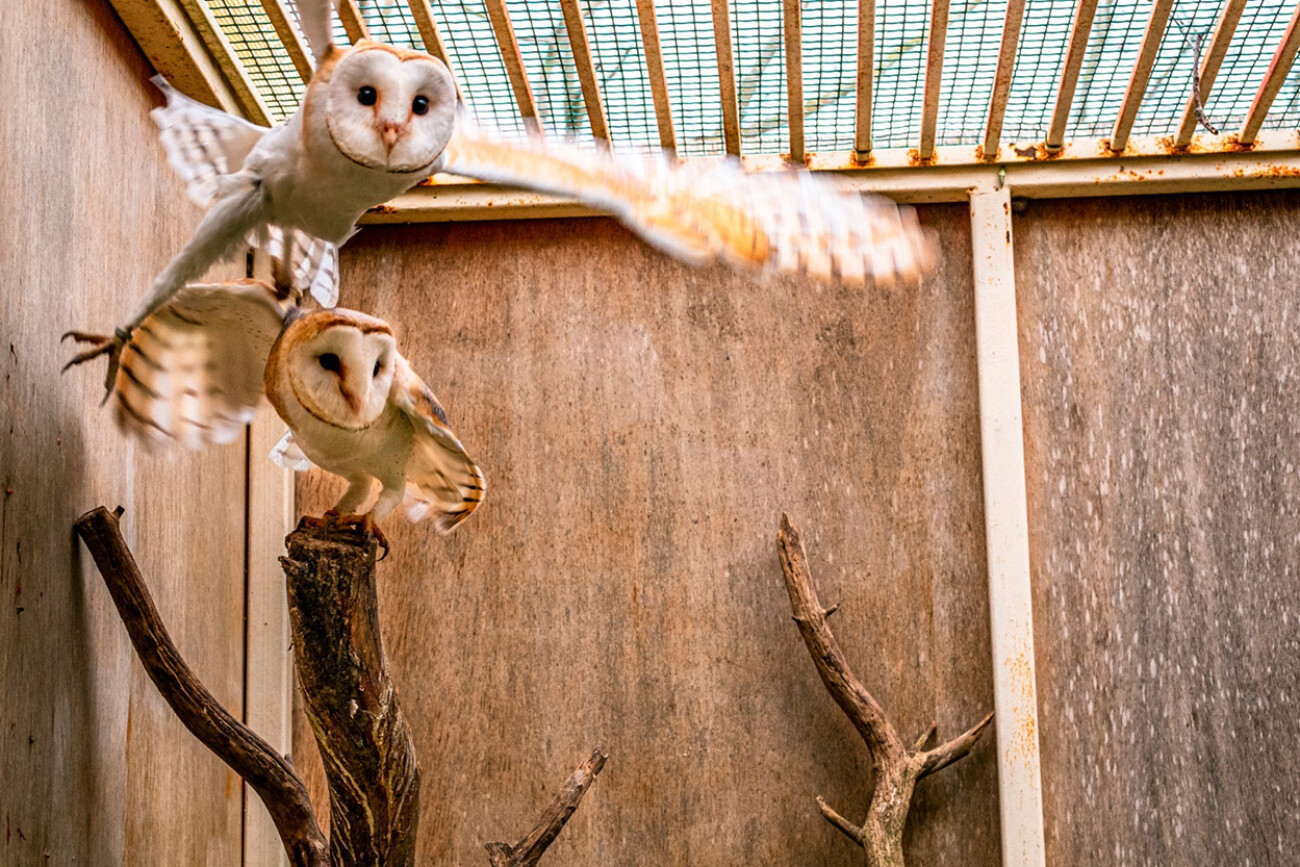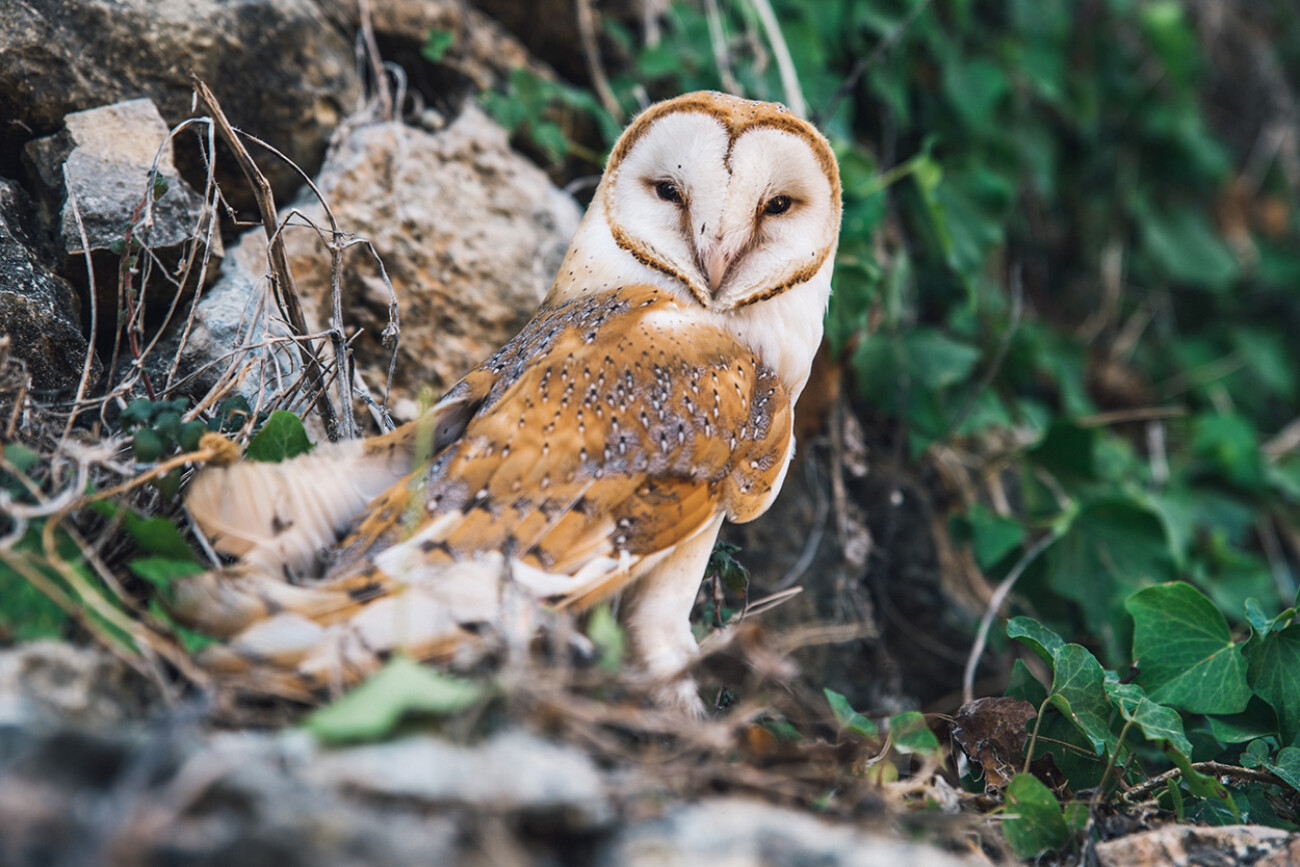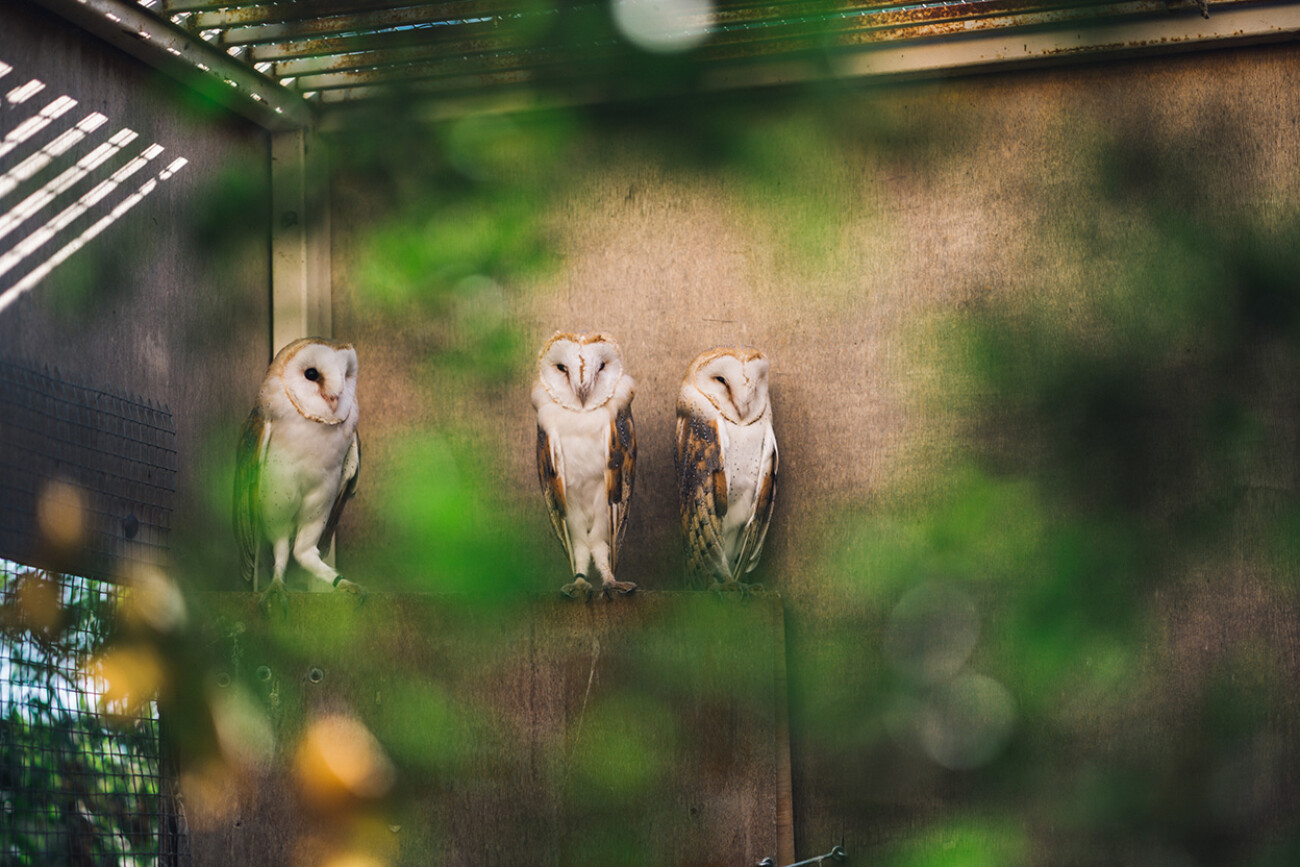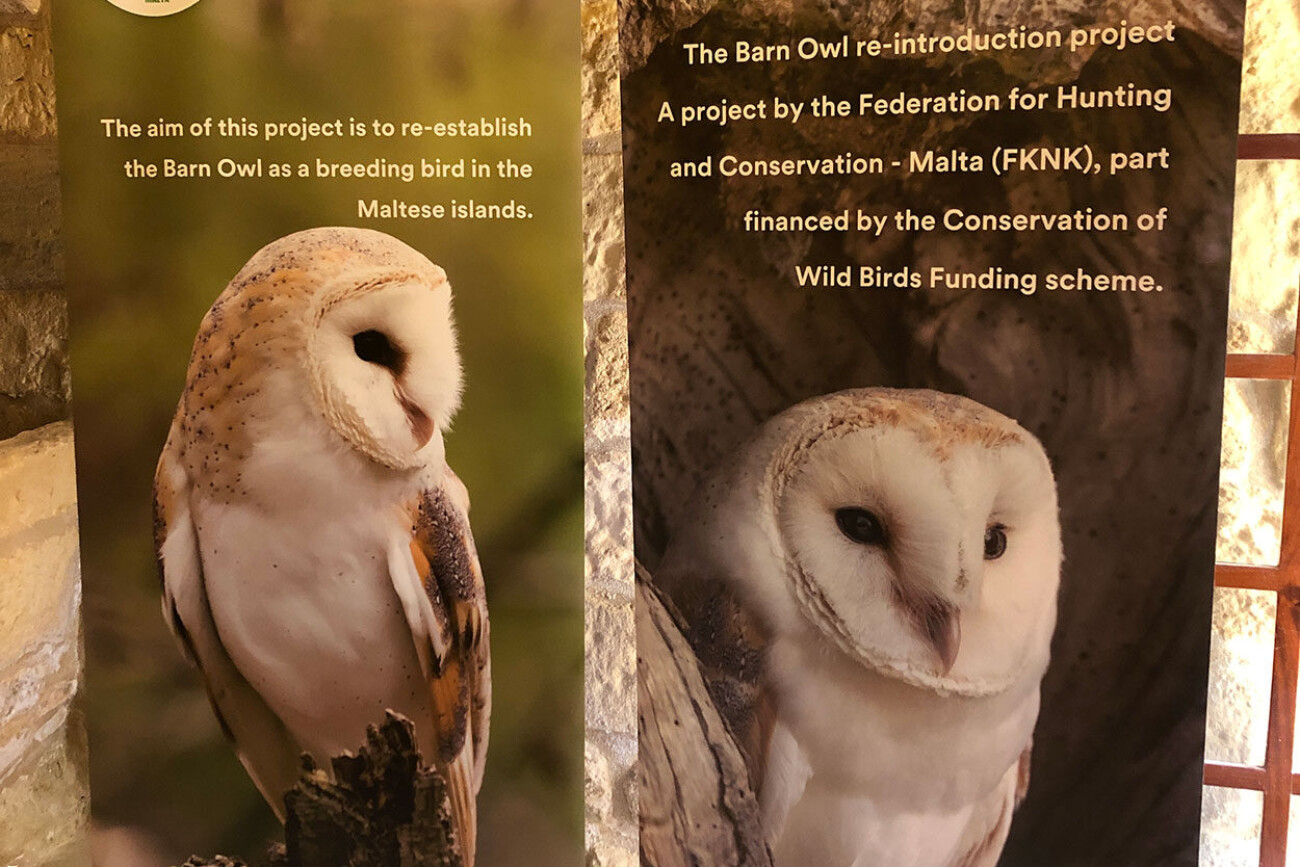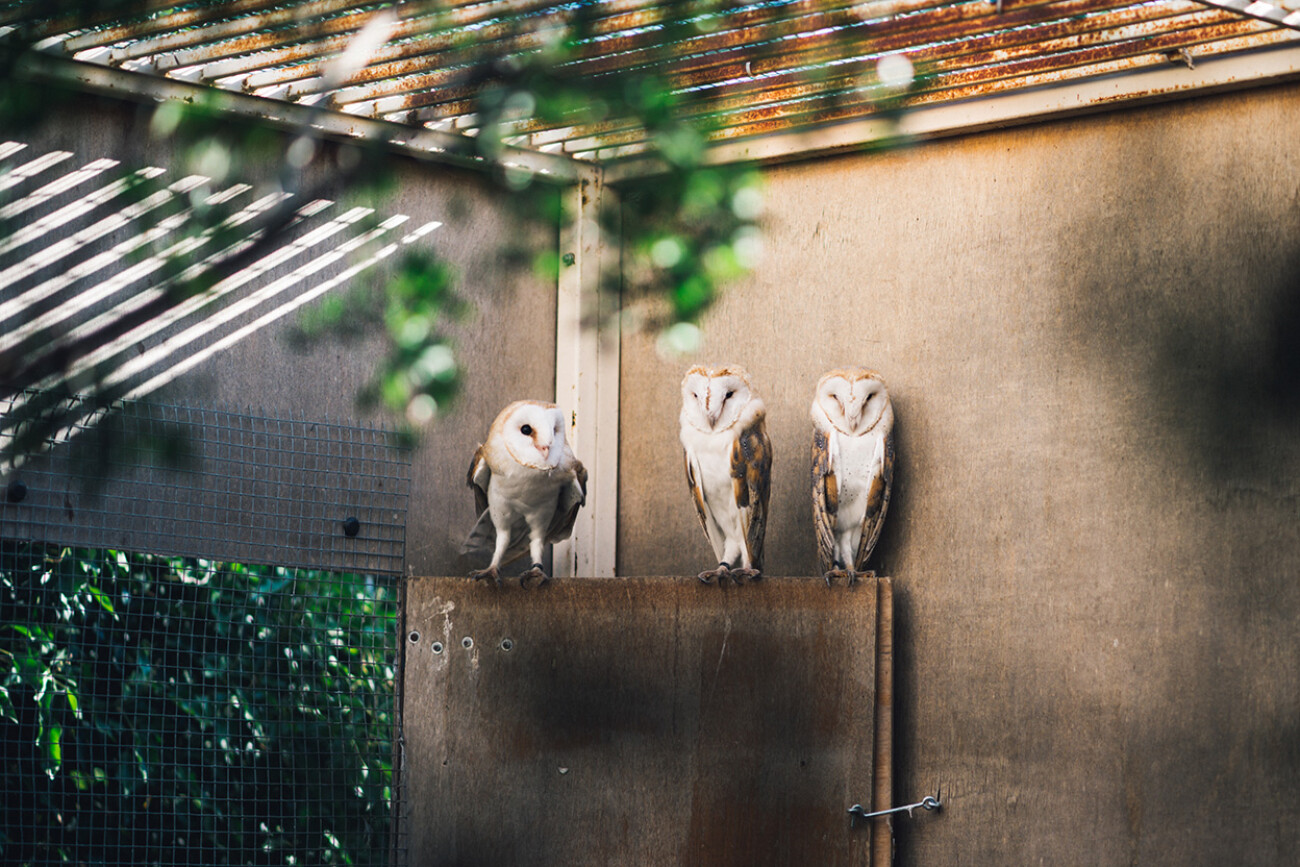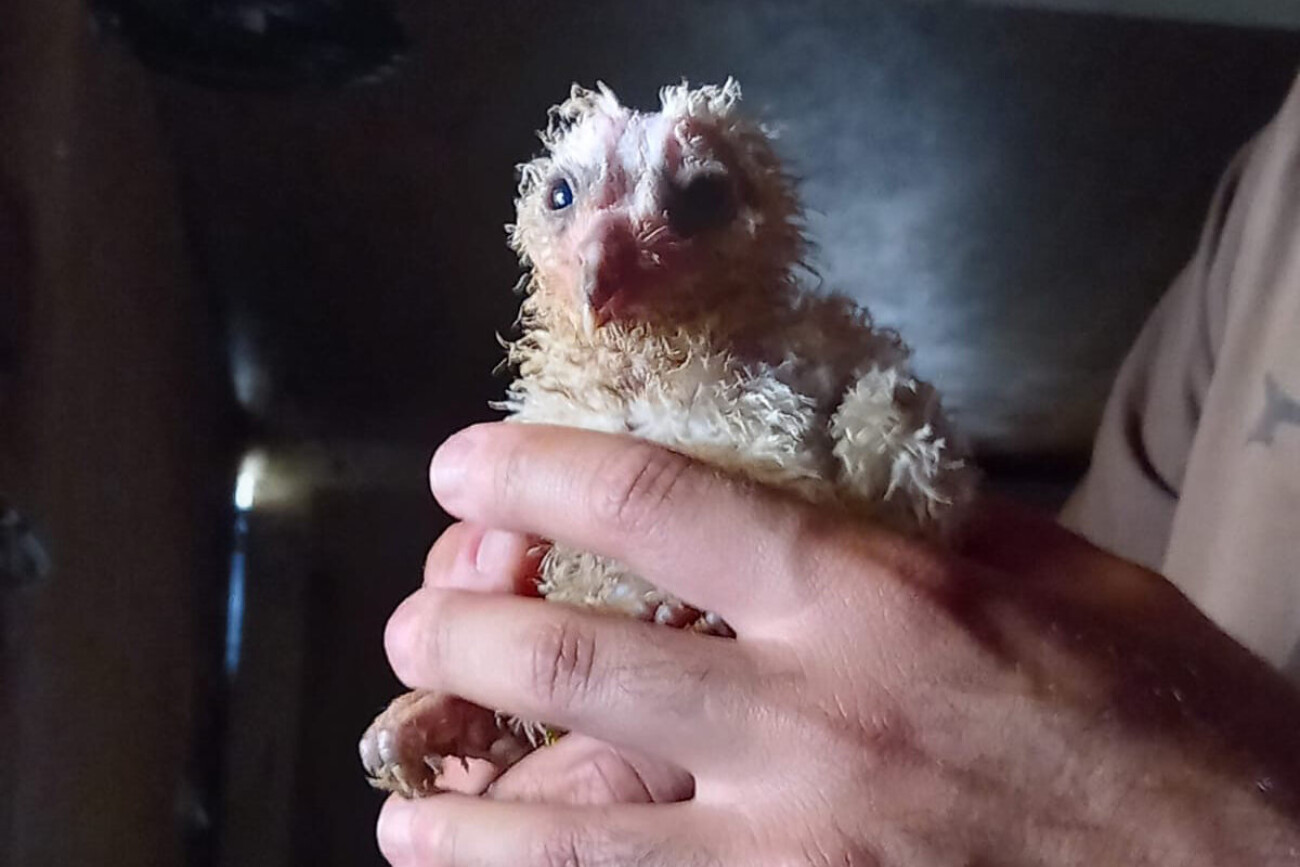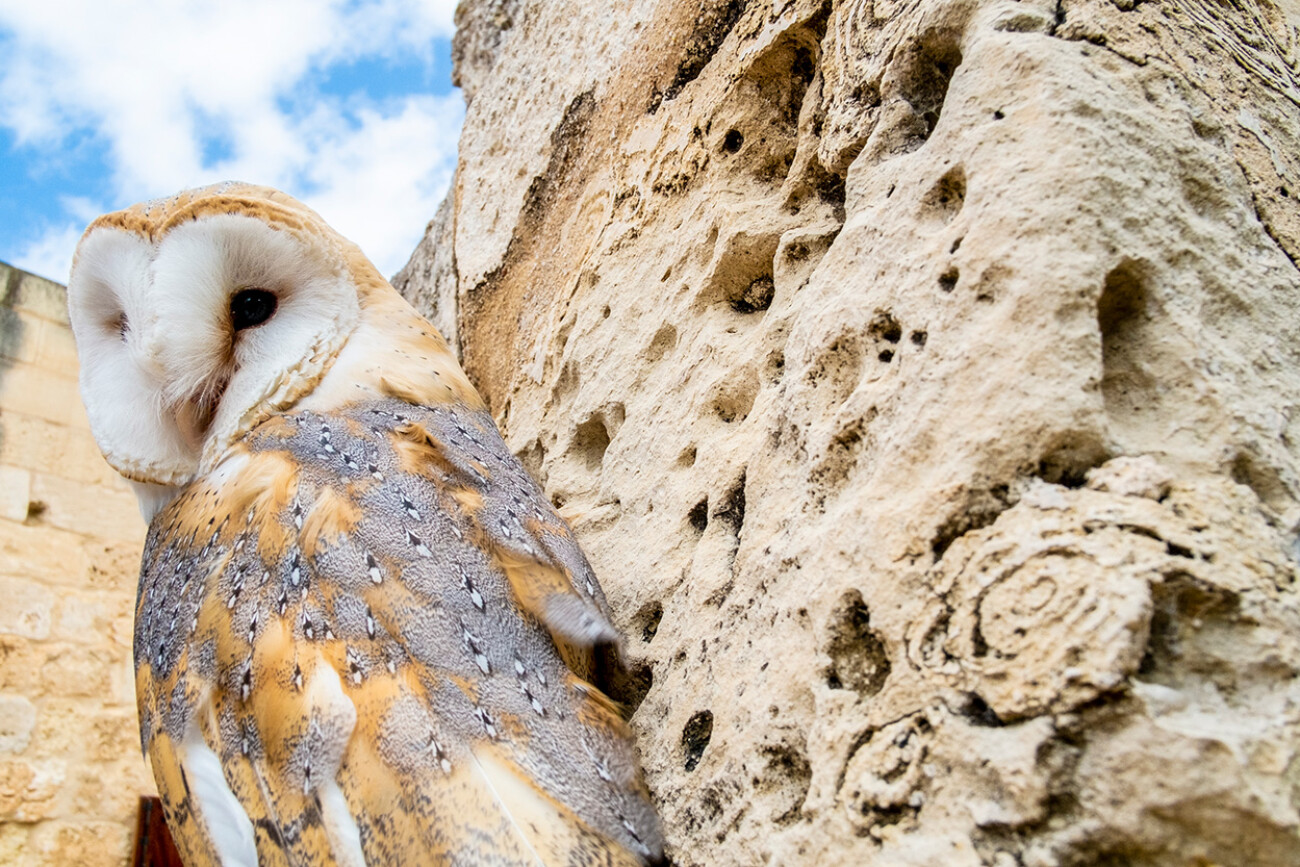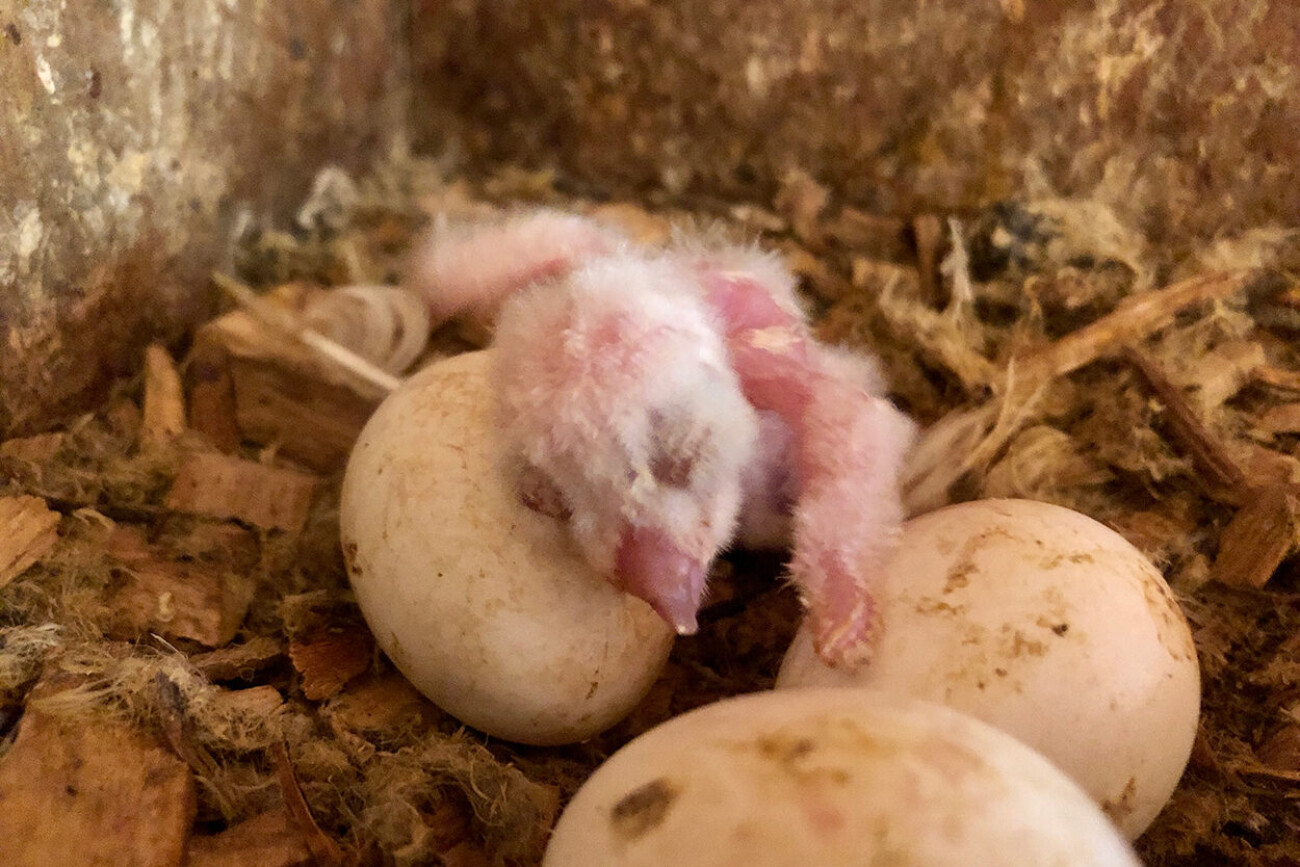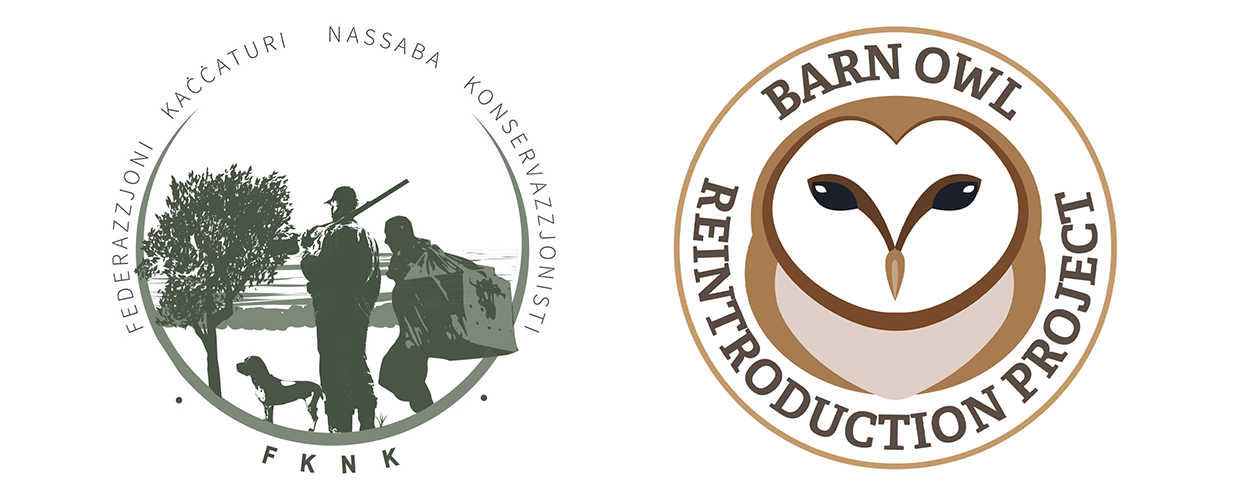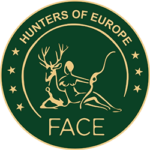The Barn Owl (Tyto alba) is an interesting bird in Malta. A few pairs used to breed regularly on the Maltese islands, however, it seems that the last pair of Barn Owls that bred in the wild was back in 1988.
Since then, many captive breeding enthusiasts, including several hunters and trappers, have managed to breed and rear the barn owl in captivity. Some have even been trained for falconry activities.
POLICY RELEVANCE
EU Birds Directive: The Birds Directive conserves wild bird species naturally occurring in the European Union. According to the Directive, Member States are requested to maintain the populations of these birds. As habitat loss and degradation are the most serious threats to bird conservation, the Directive therefore places great emphasis on the conservation of habitats by Member States.
In 2009, the Federation for Hunting and Conservation Malta – Federazzjoni Kaċċaturi Nassaba Konservazzjonisti (FKNK) – decided to launch a project for breeding and rearing the barn owl in captivity. In 2018, they purchased two pairs of a sub-species, certified by CITES, that are known to occur to the Maltese islands), in order for their offspring to be eventually released in the wild through an accepted procedure, known as ‘hacking’. It is also hoped that the released offspring will breed once again, in the wild, across the Maltese Islands. The released birds will be monitored and observed by FKNK members who roam the Maltese countryside during the whole year.
In 2015, the FKNK was entrusted with the management of the renovated farmhouse, at the Buskett Gardens, that was owned by the Knights of Malta and dates back to the 16 century – the Mule’s Farmhouse (Ir-Razzett tal-Bagħal). The FKNK built the necessary facilities to breed and rear the barn owl, next to the farmhouse, with the project being launched in 2018.
This project has been very successful with the public (in order to have the least possible direct contact with the birds, the activities, within the facility can be observed on CCTV) to generate awareness about the value about biodiversity conservation. This is the first project of its kind in Malta.
In Malta, there are a small number of bird species that breed in the wild. Only two out of 21 are birds of prey, namely the peregrine falcon and common kestrel. Currently, in Malta, no owl specie breed in the wild.
FKNK is determined to provide its contribution to local biodiversity conservation through this project. The FKNK has always shown its strong operational ability through the daily operations and management required to service about 10,000 members. Trappers and hunters believe that they have an obligation to preserve biodiversity in order to ensure the existence of all bird species and to try to re-establish the species through the use of the facilities included in such projects for effective conservation. The FKNK is well aware of this project’s value for biodiversity conservation and has employed a full-time person, as its project manager, with the latter possessing a wide experience for breeding birds in captivity.
The said Manager will supervise any needs arising from the project and will ensure the daily feeding for the barn owls, which fodder includes day old chicks and mice.
The re-establishment of the Barn Owl as a resident species will fill the missing ecological niche and contribute to Maltese biodiversity. In addition, the farmers should realise the real value of the Barn Owl in order to control the damage caused, to their fields, by rats and mice (it is estimated that a Barn Owl family can kill about 1,300 rats and mice in a year). Some landowners use rodenticides to kill rats and mice and this gives rise to some risks. The barn owl mainly eats rats and mice and consequently it might be exposed to poisoning when eating the poisoned/contaminated rats and mice.
However, this project is situated at Buskett, which is a Nature 2000 site, a Tree Protection Area (TPA), an Area of Ecological Importance (AEI), a Site of Scientific Importance (SSI), a Site of European Importance (SEI) and a Special Area of Conservation (SAC). Thus, the use of rodenticides is prohibited by law. Therefore, the risk of death by poisoning is substantially mitigated and this situation has also contributed to the project’s efficiency.
Consequently, the project’s main objective is to establish a healthy wild population of barn owls on the Maltese Islands, which will eventually also be able to breed in the wild. Another objective is to educate the public on the barn owl’s biological and ecological role.
The public will be able to observe all activities in the aviaries through a CCTV system and live-streaming facilities. The general public’s reactions, to date, towards this project, have been very positive.
In fact, many visits for school children have already been organised and the project’s progress is shown prominently on many TV news spots and other programmes, including the most popular local cultural programme, namely ‘Malta u lil Hinn Minnha’, on national TV. Many politicians, Ministers and government officials as well as Maltese MEPs have also visited this project. The general public has visited the site several times during special events and occasions.
The entire efficiency for the project conservation will be attained when the first offspring will be released in the wild and the released birds will return to the facilities hacking box for feeding, until they become totally independent and are able to hunt for food on their own. This process was executed successfully in 2020. The FKNK is confident of a successful outcome for this project since it has been designed on similar projects implemented in the United Kingdom and Ireland, with a high level of success.
The FKNK believes that this is the right time for this project especially due to the fact that public interest and enthusiasm, related to the importance of being aware of the natural environment and the conservation of biodiversity, is at its peak.
To date (over a period of two years 2021-2022) the project had successfully saw the release of 15 birds to the wild. In 2023, two dedicated nest boxes, have been erected to two identified trees in Buskett, to facilitate breeding of released subjects in the wild. The FKNK in 2023 is extending its project by fixing GPS transmitters to two released Barn owls in order to monitor and understand better the released subjects nocturnal behaviour.
The justification for the project, which became a reality with the help of the partial sponsorship by the Maltese Government, through the ‘Wild Birds Conservation Fund’ will be realised once there are, once again, a good number of barn owls living in their natural environment and breeding in the wild, after an absence of more than 30 years. Finally, the FKNK believes that conservation activities of this kind can be tailor-made for the introduction of other species of wild birds. Similar projects have already been implemented in other countries, around the world, for birds of prey, and others.
Country: Malta
Species: Barn Owl (Tyto alba)
Species characteristics:
Type of actions: Species Reintroduction, Nature education and awareness
Leading partner: FKNK - Federation for Hunting and Conservation of Malta
Other partners: Maltese Government
